Lower back stretches, like hugging your knees, bridges or cat-stretches, can help to relax and strengthen the muscles in the back, legs, hamstrings and abs. Performing these exercises regularly can improve mobility, flexibility and posture, which can help to prevent injury and relieve pain.
You should perform these stretches in the morning, while on break from work or at night before going to bed. Make sure you respect your own limits so that you do not injure your back. You should not perform these stretches if you already have a lower back injury or if you recently had back surgery. Consult your orthopedic surgeon if you have a history of back problems before trying these stretches.
Ideally, you should perform these stretches while standing or on the floor on a yoga mat. You are advised to see a physiotherapist for consult to ensure you are performing these stretches correctly. Some ways to stretch your back include:
1. Quad stretch

Stretching your quadriceps or thighs stretches your back, calf and foot, which helps to strengthen your leg muscles and reduce pressure on your lower back. Learn more about what can cause lower back pain.
How to do it: Lay down on your back with your legs and arms stretched for 10 minutes. Then bend one leg and raise the other in the air. Place a towel, belt or elastic band along on the bottom of your raised foot and straighten the leg, bringing your thigh as close to possible to your chest. Hold this for 30 seconds and repeat on the other side.
2. Leg hug
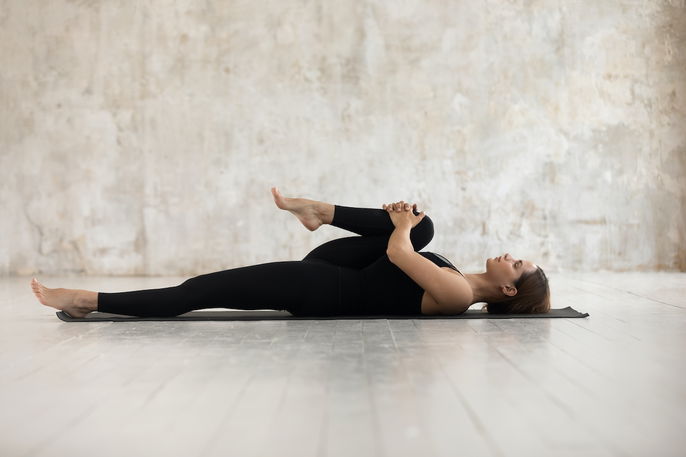
This stretch should be done on the floor, and promotes stretching of the lower back, glutes and quads. It helps to improve flexibility and amplitude of movements.
How to do it: Lie on your back and bend your knees with your feet flat on the floor. You can also bend just one leg and keep the other leg stretched on the floor. With your hands, bring one knee to your chest and hold it for 15 seconds. Repeat on the other side, and perform this stretch twice on each leg.
3. Butterfly stretch
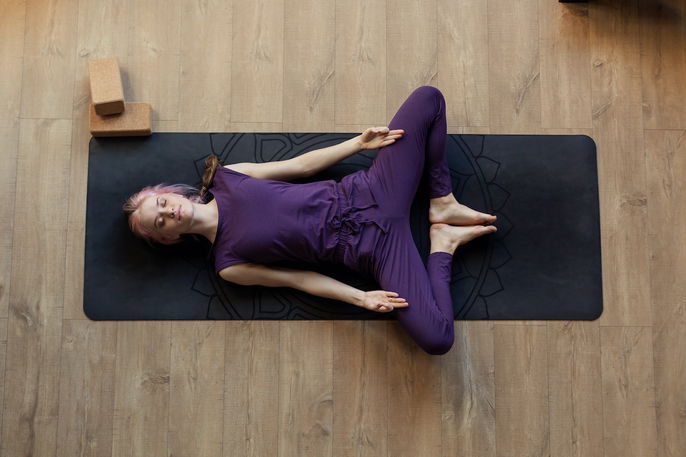
The butterfly posture helps to stretch the back and legs to relieve lumbar tension. This stretch should not be performed by anyone with intense back or knee pain.
How to do it: Lie on your back and bend your knees with your feet flat on the floor. Separate your knees in opposite directions and bring them to the floor, keeping your feet together. Hold this position for 10 seconds, relax and repeat 5 times. This stretch may cause some discomfort, therefore do not go over your flexibility limits.
4. Bridge stretch

A bridge stretch can stabilize and strengthen the core muscles that support your spine. This stretch works your lumbar muscles, glutes, hamstrings and abdomen.
How to do it: Lie on your back with your arms at your sides and bend your knees with your feet flat on the ground. Ensure your heels are knee-width apart. Contact your abs and glutes and lift your glutes from the floor until your knees form a straight line from your trunk to your head. Hold this for 5 to 10 seconds, then lower your glutes. Relax and repeat this exercise 5 times.
5. Serpent stretch
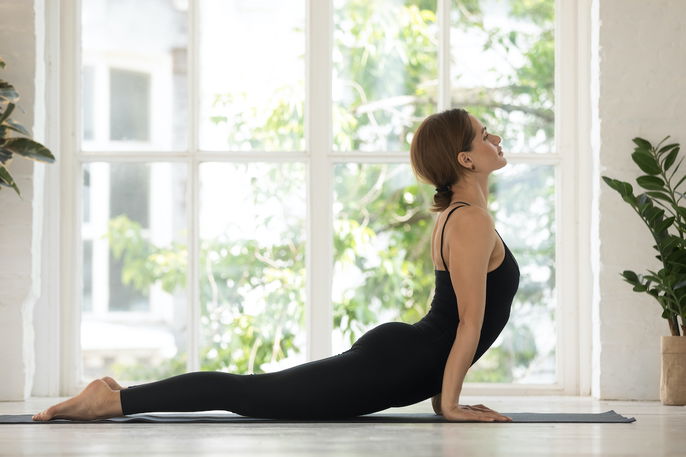
The serpent stretch helps to stretch and strengthen the mid-back muscles, which helps to prevent lower back pain.
How to do it: Lie on your stomach with your legs stretched. Place your hands facedown beside your chest and lift your chest from the floor. Keep your arms stretched and look forward, with your neck parallel to the floor. It is important to keep your hamstrings and abdomen contracted when holding this stretch. Hold it for 30 seconds and repeat 4 more times.
6. Superman
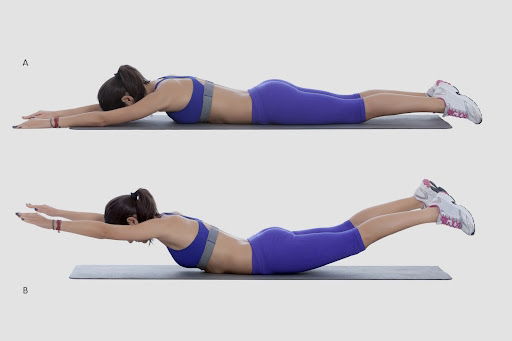
The superman stretch imitates Superman in flight and helps to strengthen the lumbar muscles as well as the abs, glutes, quads and shoulders. It improves posture and flexibility.
How to do it: Lie on your stomach with your legs stretched and arms stretched above your head. Your palms should be facing down. Contract your abs, glutes and lower back and lift your arms and legs from the floor, as if you were flying. It is important to keep your head in-line with your spine. You can do this by making sure you look forward. You should not lift your arms or legs more than 20 cm from the floor. Hold this position for 2 to 5 seconds and return to your starting position. Repeat this movement for 1 minute.
7. Cat stretch
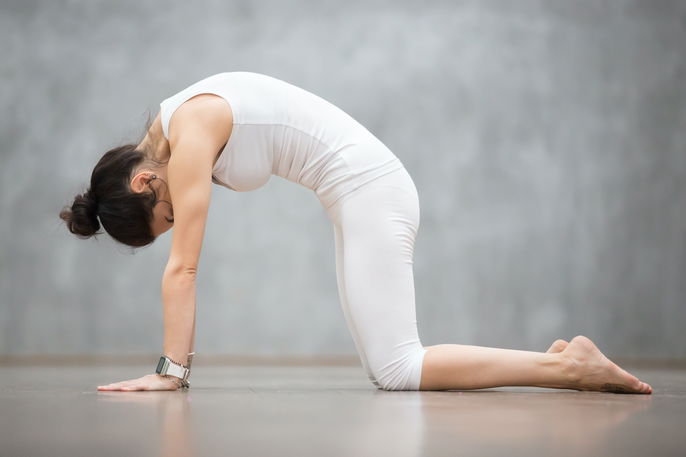
A cat stretch helps to stretch the back, hamstring, abdominal and thoracic muscles. It helps to improve flexibility of the lower back, neck and shoulders.
How to do it: Get on all fours on the floor, with your knees hip-width apart and your wrists in-line with your shoulders. As you inhale, dip your back with your chest toward the floor, and raise your chin. As you exhale, round out your back and look down toward your belly button. Hold this position for 15 to 30 seconds and return to the initial position. Repeat this stretch 2 to 4 times.
8. Hip rotation

Hip rotations can help to improve flexibility of the spine and hips, and reduce rigidity. Performing this regularly can help to stabilize the body.
How to do it: Stand and separate your feet shoulder-width apart with your hands on your hips. Slowly, make a circle with your hips, making sure to extend your hips to the front, right, back and left. Then rotate the circle the other way. You can repeat this stretch twice each way.






























